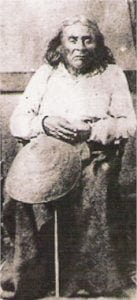E- Oregon Indian Villages, Towns and Settlements
A complete listing of all the Indian villages, towns and settlements as listed in Handbook of Americans North of Mexico. Enitunne (‘people’ at the base of a plateau’). A village of the Tututni near the mouth of a southern affluent of Rogue r., Oreg. Enitunne. A part of the Mishikwutmetunne in a village on upper Coquille r., Oreg. Etaatthatunne (people at the cove). A village of the Tututni of Oregon. Eushtat (E’-ushtat). The principal settlement of the Klamath on lower William son r., near lower Klamath lake, Klamath co., Oreg. Gatschet in Cont. N. A. Ethnol., ii, pt. 2, 32, … Read more

